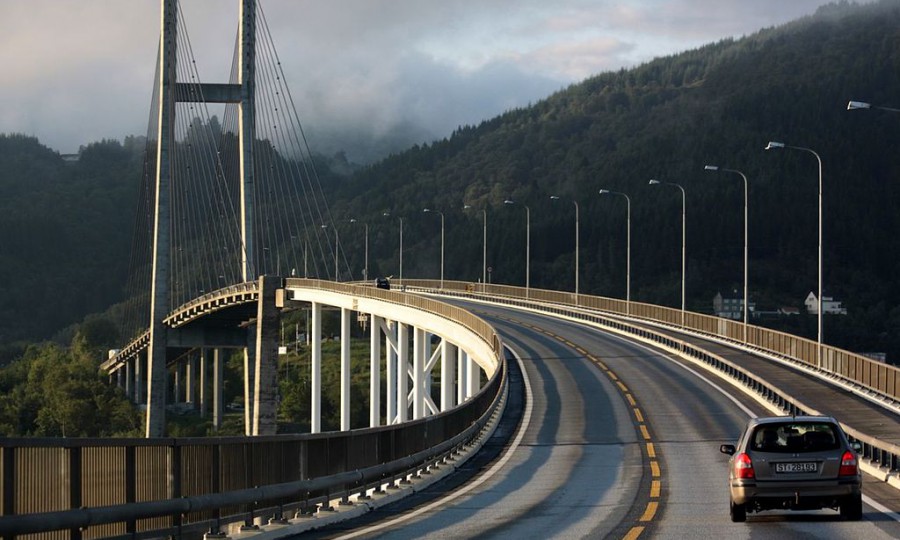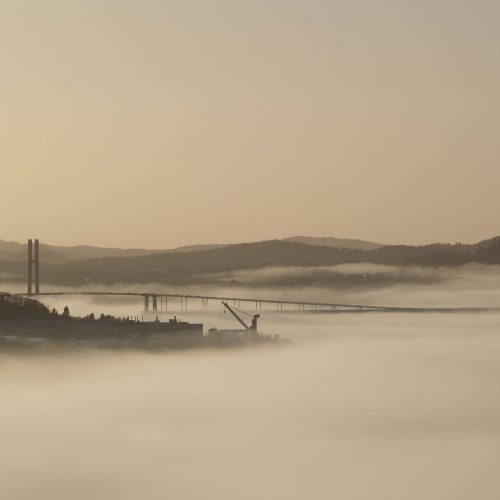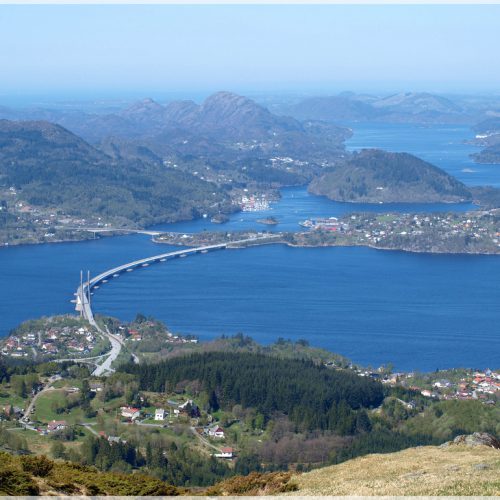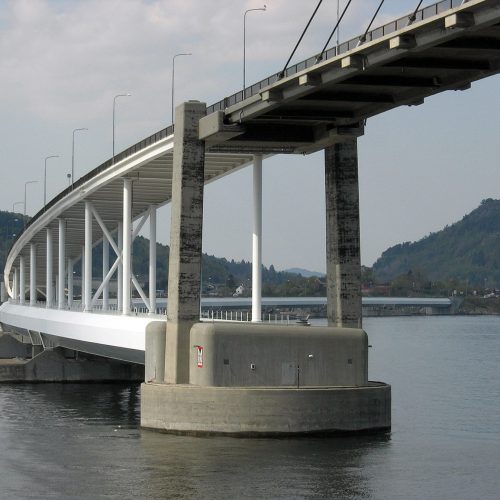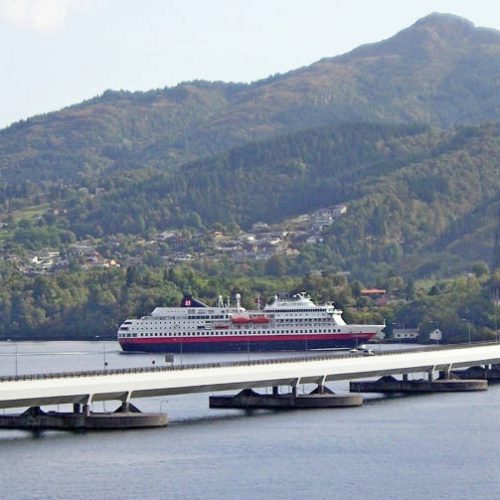Norway
Nordhorland Cable Bridge
Year: 1996
Location: Klauvaneset, Norway
Country: Norway
Owner Builder: Norwegian Public Roads Administration
Contractor: Kværner / Norwegian Contractors
Designer: Dr. Ing. A. Aas-Jakobsen / Norwegian Public Roads Administration
Problem / Solution
The Nordhordaland bridge consist of the world’s longest free floating bridge (1999), 1246m, and a high-level cable stayed bridge across the ship channel of 32 x 50m. The cable stayed bridge has a main span of 172m. This is designed in high strength light weight aggregate concrete (LWAC) and cantilevered from one H-shaped pylon founded on land. The main span is stabilised by back spans with total length 190m.
Experience
The caisson in axis 9 is the fixed point for the floating bridge and carries mainly horizontal forces in addition to small vertical loads from the bridge beam between expansion joints required by the floating bridge and the cable stayed bridge respectively. For this bridge site two bridge types were considered – cable stayed and arch. The cable stayed bridge was investigated for alternative designs of the main span beam in steel/concrete composite, normal weight concrete C 55 and LWA-concrete
Why expanded clay?
The cost savings obtained by using LWA concrete in the pontoons has not been quantified in the project. However, it is obvious that the savings the bridge are considerable due to: 1) Lighter material give smaller pontoons. Smaller pontoons cost less to build. 2) Smaller pontoons receive smaller wave action and hydrostatic forces from sea current. Therefore, the superstructure itself can be constructed lighter. A lighter superstructure needs again smaller floaters etc. By use of light concrete the structure turns itself into a positive circle by reducing weight and size.
